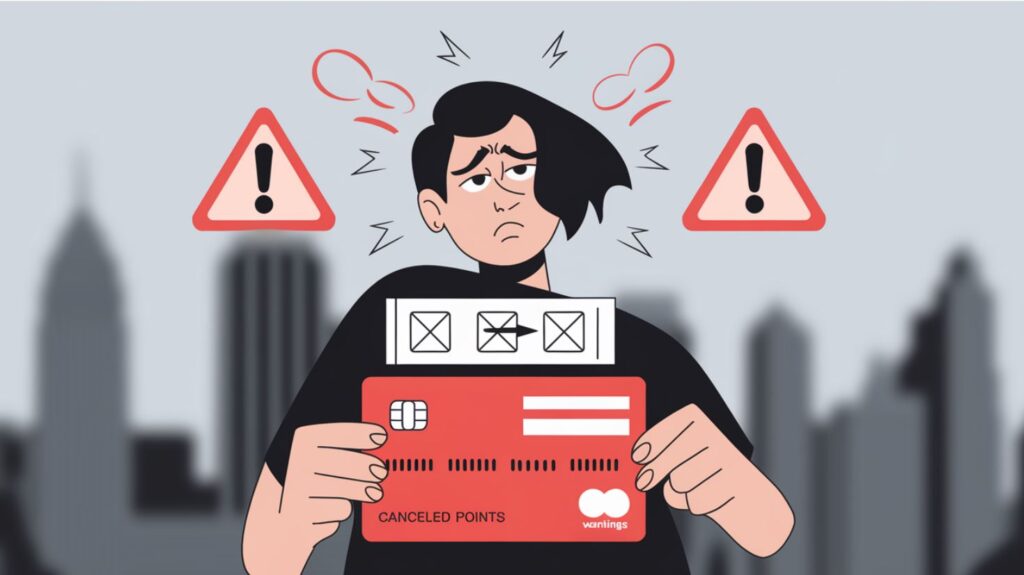Imagine enjoying complimentary champagne while traveling first class to your dream destination with credit card rewards. Or perhaps checking into a luxury hotel suite without incurring costs—all thanks to clever credit card management! This reality is for travelers who understand how best to utilize travel rewards credit cards.
Picking out the appropriate travel rewards credit card may seem like a maze; with so many choices out there, it can seem daunting. Should you opt for airline miles or hotel points? Is its high annual fee worthwhile? No worries—we will walk you through everything you need to know in order to find one that perfectly matches your lifestyle and travel goals.
What Are Travel Rewards Credit Cards?
Consider travel rewards credit cards as your gateway to smarter and more cost-effective travel. Unlike traditional credit cards that simply charge your purchases, travel rewards credit cards act as your personal travel agent by helping you unlock valuable rewards with every swipe. When I first discovered travel rewards credit cards, I was skeptical—how could everyday purchases turn into free travel? But after earning a round-trip flight to Europe through strategic spending, I became an unwavering advocate.
Types of Travel Rewards Credit Cards
Travel rewards credit cards typically fall into three main categories:
- Airline Cards: Earn miles on specific carriers.
- Hotel Rewards Cards: Offer points-based stays.
- General Travel Rewards Cards: Provide flexible redemption methods.
Any purchase made acts as an investment towards future travels: groceries, gas fill-ups, or paying for dinner bills all become investments towards future adventures.
Benefits Of Cashback Cards
Travel rewards credit cards offer distinct advantages over cashback cards:
- Higher Returns: Typically deliver 3-5% or more when used strategically, compared to cashback cards’ 1-2%.
- Additional Perks: Useful travel perks that can enrich the travel experience altogether.
Consider These Key Elements When Selecting a Travel Rewards Credit Card
1. Find Out Your Travel Habits and Goals
Before selecting specific card options, take some time for honest self-reflection. Consider your travel habits:
- Frequency: Do you take short domestic trips often or long trips annually to distant places?
- Preferences: Do you prefer flexibility over loyalty program perks?
As soon as I began exploring travel rewards, I made one costly error: signing up for an airline-specific credit card—only to later realize they seldom flew from my local airport! Now, whenever friends approach me about travel rewards cards, I advise them first to outline their travel ambitions before making their commitment.
Consider whether flexibility trumps loyalty program perks. If you don’t prefer being tied down to one airline or hotel chain, a general travel rewards card might work better for you. Also, think about your travel style—do you enjoy luxury experiences, or do you prioritize making as many trips as possible?
2. Sign-Up Bonuses
One of the most alluring aspects of travel rewards cards is their sign-up bonuses, which can sometimes exceed $1,000 in travel value! But don’t make these flashy figures your primary deciding factor when making your decision.
Sign-up bonuses often require spending a certain amount within your first several months as a card member, for instance, $4,000 over three months to earn 60,000 points. Before being lured in by such large bonuses, carefully evaluate whether this spending requirement can be met through regular expenses without overstretching yourself financially.
Before applying for a new card, I recommend creating a simple spreadsheet to monitor your typical monthly spending patterns and ensure you can comfortably meet its minimum spend requirement without making unnecessary purchases. Remember, the goal of rewards programs is not simply spending more—rather, rewards can only be earned on spending you would do anyway!
3. Rewards Structure
Understanding a card’s reward structure is crucial. Every travel rewards card offers its own earning formula, and mastering them can lead to significant increases in rewards accumulation.
Let me offer you an example from my own life: When I first began using travel rewards cards, I used one card exclusively. Over time, however, I realized I was leaving thousands of points untapped by not taking advantage of category bonuses and using Chase Sapphire Reserve for dining and travel purchases (earning 3x points) while pairing it with other cards for other spending categories.
Most travel cards offer bonus points in specific categories. Common multipliers may include:
- Purchases: Flights, hotels, and car rentals
- Dining and Restaurants; Grocery shopping; Gas stations
- Entertainment
Pay close attention to how different cards define these categories. For instance, some may consider food delivery services “dining,” while others don’t; similarly, “travel” might include rideshare services and parking fees with one card but not another.
4. Redemption Flexibility
Accumulating points is great, but only when they can be put to good use. Redemption flexibility becomes crucial in this instance and may often determine which cards to purchase.
Consider points flexibility like currency exchange rates—some points have more worth than others. My experience has shown me that rewards programs offering multiple redemption options—especially those featuring airline and hotel transfer partners—tend to provide the greatest value.
Think about Chase Ultimate Rewards program points; these could include anything from airline miles and retail gift cards to hotel stays.
Transferred to Multiple Airlines and Hotels Partners
- Utilized to book travel directly through Chase’s portal.
- Cash-back rewards may also be redeemed (though usually for less value).
- Statement credits may be applied toward eligible purchases as statement credits.
Understanding the relative values of different redemption options is key. I once helped a friend recognize she could get three times more value from her points by transferring them to an airline partner instead of redeeming them as gift cards, turning her modest points balance into a business-class ticket to Japan.
5. Annual Fees and APR Considerations
Let’s address everyone’s least favorite subject: fees. While initial reactions to annual fees may be negative—why pay when there are free alternatives available—this perspective could cost you valuable benefits and rewards.
As I first considered getting my first premium card with its $450 annual fee, I initially balked. But once I took an honest assessment of what benefits were actually useful (airport lounge access, travel credits, free checked bags, and earned points), then my estimate rose significantly: over $1,000! So the key question should always be this one: Will you actually use enough benefits from your premium card to offset its fee?
Here’s how to evaluate whether an annual fee is justified:
- Calculate the value of a sign-up bonus (spread over 1 or 2 years).
- Consider the value of benefits to you.
- Estimate your annual rewards based on spending patterns.
- Subtract Annual Fee from total benefits.
As for APR (Annual Percentage Rate), let me be direct: if you plan to carry a balance, low-interest cards would be preferable to travel rewards cards due to the latter’s high-interest charges outweighing any travel benefits gained. Travel rewards cards work best when your balance is paid in full each month.
6. Perks and Benefits
Travel rewards cards often offer additional perks and benefits that can enrich your travel experience, turning an ordinary trip into something extraordinary if only you take note to use them! But this requires recognizing they exist and utilizing them.
Let me share an experience that turned into an eye-opener: my flight was canceled due to weather, and I found myself stuck at the airport for days—but because I booked using my travel rewards card, trip delay coverage paid for my hotel stay and meals—something many cardholders don’t realize is even an option until it becomes necessary.
Common premium card benefits include:
- Airport Lounge Access: Priority Pass, Centurion Lounges
- TSA PreCheck or Global Entry Fee Credits
- Trip Cancellation/Interruption Insurance: Provides peace of mind when traveling abroad
- Lost Bag Protection with rental car coverage that does not charge foreign transaction fees
- Hotel and Airline Credit Fees
- Concierge Services
Please keep in mind that activating concierge benefits often require specific actions on your part, for instance, using your card to purchase everything covered by travel insurance and activating some hotel status benefits through its online portal.
Popular Types of Travel Reward Credit Cards
Co-Branded Cards
Do you remember the excitement of joining your first frequent flyer program? Co-branded cards extend this loyalty further; partnerships between credit card issuers and specific airlines or hotel chains offer exclusive perks for loyal customers of those brands.
Experience with co-branded cards has taught me they can be enormously useful when chosen carefully, such as my United Explorer Card paying for itself many times over just in saved bag fees alone. But I have also witnessed friends struggle with cards that did not cater well to their home airport.
Co-branded cards hold their appeal in their various benefits:
- Free Checked Bags
- Priority Boarding and Companion Airline Tickets
- Free Hotel Night Certificates
- Automatic Elite Status before flying
- Purchase Discounts
- Higher Earning Rates on brand purchases
Brand loyalty and frequent usage are the keys to successful reward cards. If you fly one airline frequently or stay with one hotel chain often, the rewards can add up quickly; but if you prefer shopping around for deals instead, co-branded cards might limit what deals are available to you.
General Travel Rewards Cards
General travel rewards cards can be seen as the Swiss Army knives of travel credit cards—they’re versatile, flexible, and prepared for almost every travel situation. Cards such as Chase Sapphire Reserve or Capital One Venture have revolutionized how we view travel rewards.
My experience with general travel cards began when I realized I required more flexibility than what my airline card could provide. Being able to transfer points between partners or book travel through portals opened up opportunities I hadn’t considered previously.
What makes these cards special:
- Flexible Redemption Options available
- Multiple Transfer Partners
- Travel Portal Booking Options available
- Better Earnings on Travel Expenses
- Redemption Restrictions have been eased for redemptions
- Ability to Combine Points with cards within the same ecosystem
These cards offer tremendous flexibility; one month you could transfer points to an airline for business class tickets, while the next, booking boutique hotels through their travel portal—guaranteeing your rewards are never going unfulfilled! This flexibility means your rewards won’t ever go to waste!
How to Maximize the Value of Travel Rewards Credit Cards
Through years of experience and some costly errors, I’ve come to appreciate that maximizing travel rewards is both an art and a science. It involves not simply amassing points but using them effectively.
Get Organized
Keep track of which cards to use for different purchase categories to maximize rewards:
- Example Setup:
- Chase Sapphire Reserve: Dining and travel seamlessly.
- American Express Gold: Groceries.
- Capital One Venture: General spending.
Advanced Strategies
Here are some advanced strategies I have discovered:
- Combine Reward Programs
- Use Shopping Portals for Online Purchases
- Connect Your Card to Airline Shopping Programs
- Register for Promotional Offers
Maximize Redemptions
- Book in Off-Peak Seasons to maximize redemptions.
- Explore Transferring Bonuses for successful award chart searching.
- Consider Multiple Redemption Options
Common Mistakes to Avoid
I want to share some hard-learned lessons about what not to do when it comes to travel rewards cards. Mistakes such as these could cost money or points—even experienced users have fallen victim.
- Fear of Annual Fees: Some fees are worth the benefits; others are not. Evaluate based on usage.
- Chasing Sign-Up Bonuses: Ensure long-term value beyond the initial bonus.
- Letting Points Expire: Track your points to prevent loss.
Fear of Annual Fees
People either fear annual fees outright or justify them without proper analysis. But in reality, some annual fees may be worth their while, and others not so much; I held onto one premium card for two years until realizing I wasn’t using its benefits enough to warrant paying the annual fee.
Chasing Sign-Up Bonuses
While sign-up bonuses can be highly advantageous, don’t let them control all your decisions. I have witnessed friends apply for cards with great bonuses but limited long-term value only to be left wondering what their next move should be once their initial year has expired.
Letting Points Expire
Points and miles aren’t long-term investments; their value declines over time and some can expire without being used. To keep an eye on them and ensure your points don’t expire before being put to use again, create a tracking system—even something as basic as an Excel spreadsheet can work wonders in keeping tabs.
Comparison of Top Travel Reward Credit Cards
Let’s discuss some of the most popular travel rewards cards available now, based on personal testing experience with multiple cards. Each has different advantages that may suit different travelers depending on your specific travel goals and needs; hence the “best” card may differ depending on you and your specific circumstances.
1. Chase Sapphire Reserve
- Annual Fee: $550
- Key Benefits:
- 3x points earned when traveling and dining out.
- Priority Pass lounge access with $300 annual travel credit.
- Chase portal redemption adds 50% more value when redeeming through Chase portal; ideal for frequent travelers looking to maximize luxury perks.
2. American Express Platinum
- Annual Fee: $695
- Key Benefits:
- 5x points on flights booked directly with American Airlines and Aeromexico.
- Extensive lounge access: Centurion, Priority Pass, and Delta Sky Club.
- Best for luxury travelers who appreciate premium experiences.
- Receivers of airline fee credits as well as various lifestyle credits.
3. Chase Sapphire Preferred
- Annual Fee: $95
- Key Benefits:
- 2x points on travel and dining expenses.
- Up to 25% greater value through the Chase portal.
- Robust travel insurance.
4. Capital One Venture
- Annual Fee: $95
- Annual Benefits Include:
- 2x miles on all purchases.
- Global Entry/TSA PreCheck Credit Access.
- Ideal For: Individuals seeking straightforward rewards without category tracking.
How to Apply for a Travel Rewards Credit Card
Applying for credit card rewards might seem straightforward, but proper timing and preparation can greatly increase your odds of approval. I can provide some insider knowledge from my years in this space that could prove valuable in helping you navigate it successfully.
Before Applying for Travel Cards
- Review Your Credit Score
- Most premium travel cards require scores above 720 for approval.
- Some mid-tier cards accept scores up to 680.
- Use free credit monitoring services to keep an eye on your score and monitor it over time.
- Calculate Your Income
- Include all sources of income in the calculations.
- Consider household income when making decisions relating to the budget.
- Be ready to provide evidence of income if asked.
- Review Your Credit Report
- Carefully consider any discrepancies on your report that require correction.
- Ensure all accounts are in good standing.
- Check for recent hard inquiries by searching your credit report.
Timing Your Application
Timing is of the utmost importance when applying for something, as this could make all the difference between approval and denial. Please consider these elements when timing your application:
- Apply When You Anticipate Major Expenses in the near future.
- Wait at Least 3-6 Months between card applications.
- Watch for Temporary Higher Sign-Up Bonuses that could save you time and money.
- Consider Bank-Specific Rules: Like Chase’s 5/24 rule.
Frequently Asked Questions (FAQs)
Can I Obtain a Travel Rewards Card Even with Average Credit?
- Premium Cards: Typically require excellent credit (720+).
- Entry-Level Cards: Suitable for mid-600s, such as Capital One VentureOne or Discover it Miles.
How Are Points and Miles Different?
- Flexibility and Redemption Values:
- Airline Miles: Limited to specific carriers and partners.
- Bank Points: Greater redemption possibilities and transfer options.
- Transferable Bank Points: Provide the greatest flexibility and value.
What Happens to My Points if I Cancel the Card?
- Airline/Hotel Points: Usually remain in your loyalty account.
- Bank Points: May expire unless transferred before cancellation.
- Grace Periods: Some programs offer time to redeem after cancellation.
Are Multiple Cards Better or Just One?
- Multiple Cards: Benefit those with varied spending patterns.
- Start Small: Begin with one and gradually add more as needed.
Final Thoughts
Selecting the ideal travel rewards credit card can be an individual journey, dependent upon your unique travel goals, spending habits, and comfort with annual fees. There’s no one-size-fits-all solution; what matters is finding a card—or combination of cards—that best suits your lifestyle while providing maximum rewards.
After carefully considering your travel goals and spending habits, assess whether flexibility over specific perks is of paramount importance for you. Don’t be intimidated to start small; once comfortable managing rewards, you can expand your credit card strategy accordingly.
Always keep in mind that travel rewards cards should only be used as tools to enhance your travel experiences, not as an excuse to overspend. Used responsibly, these cards can open doors to adventures that might otherwise have seemed out of reach.
Are you ready to embark on your travel rewards adventure?
Take the first step by assessing your spending patterns and travel goals, then use this guide to select the ideal card. With so many travel rewards cards out there waiting for you—your next journey may be closer than you think!



